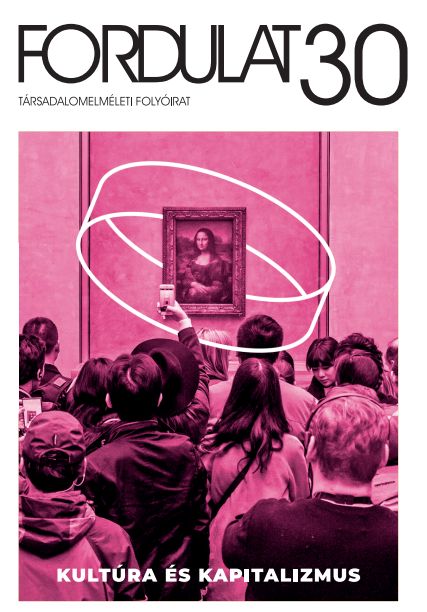
We kindly inform you that, as long as the subject affiliation of our 300.000+ articles is in progress, you might get unsufficient or no results on your third level or second level search. In this case, please broaden your search criteria.

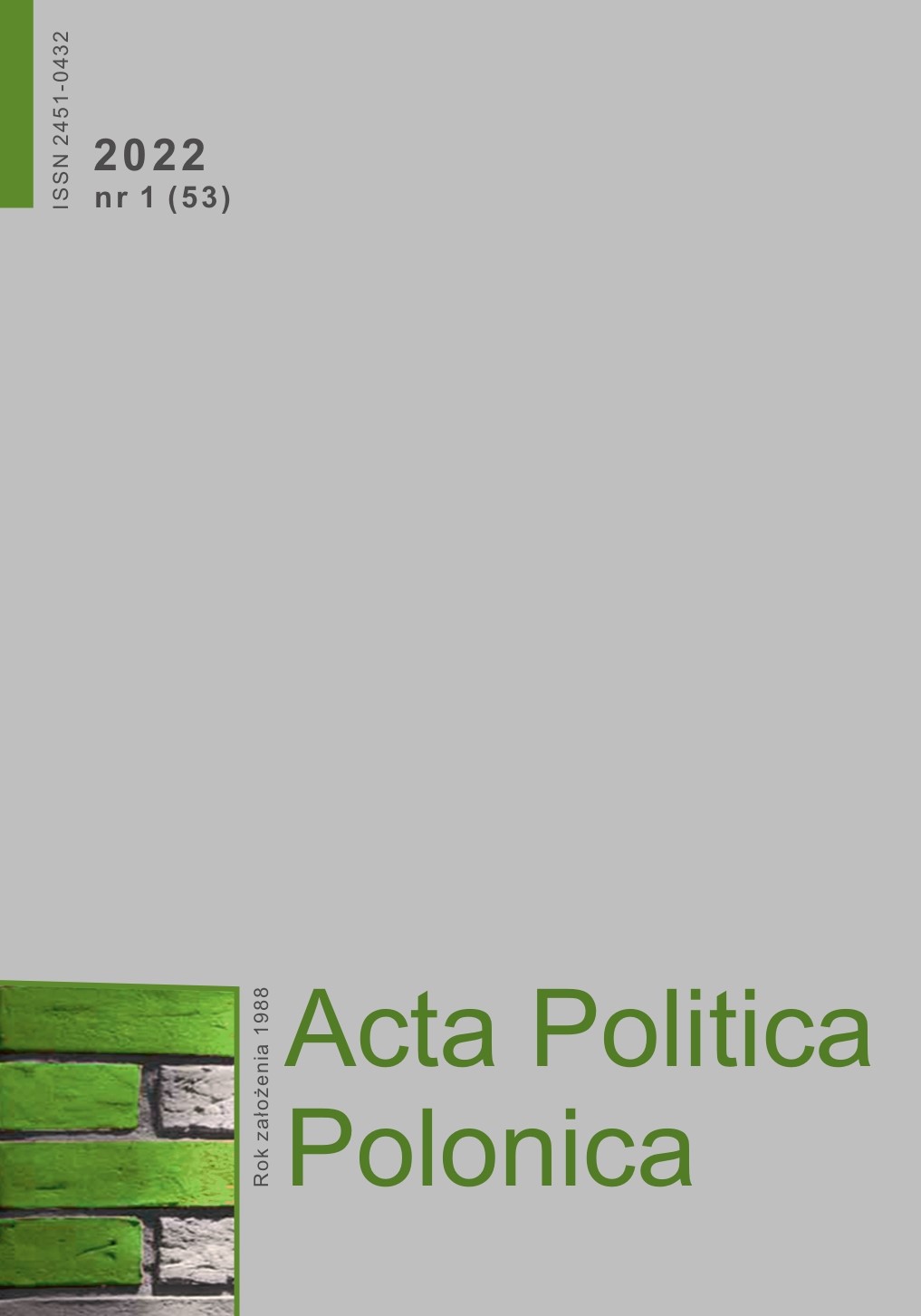
Social media play an important role both in social and political life, which translates into changes in communication between politicians and society. The basic objective of this article is to demonstrate the impact of Internet and social media on the way contemporary political campaigns are conducted and the very image of politicians. Moreover, attention is paid to the influence of the Internet on the quality of communication and on the way politicians function in selected social media: Facebook, Instagram, Twitter. A thesis is put forward that social media affect the changes which are noticeable in the way election and political campaigns are run.
More...
The Hungarian fashion industry has evolved over the past decade, between 2010 and 2020. Since Hungarian fashion is a part of the global creative field, its cultural producers’ opportunities and its structural changes cannot be examined without regard
More...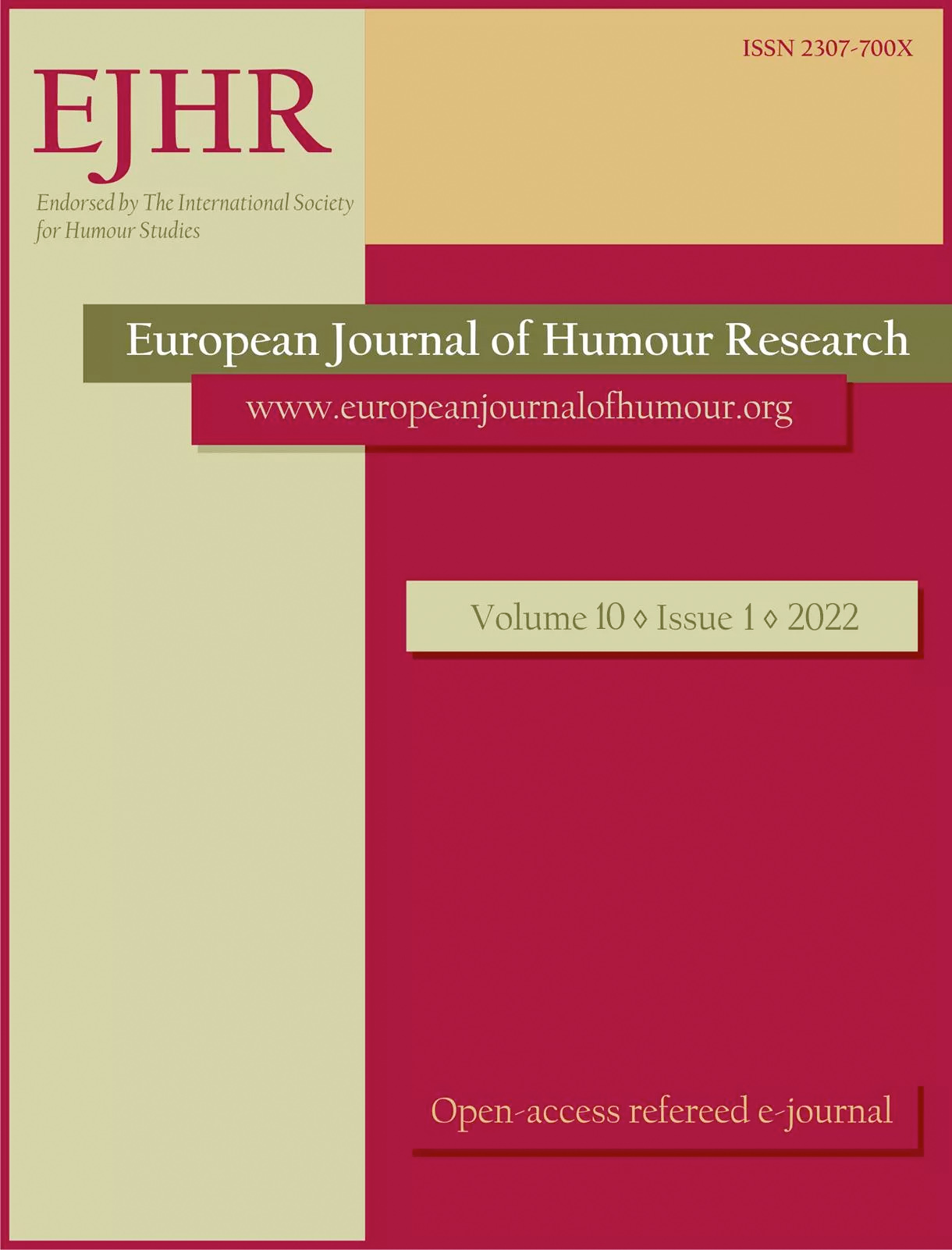
This article marks the first decade of the European Journal of Humour Research. We wish to thank all our Authors and Editorial Team members – Editorial Assistants, members of the International Editorial Board, and Reviewers from all over the world, who have been working hard for many years – all pro bono publico. We welcome new contributors and collaborators in the coming decade.
More...
The research note deals with the analysis of lexico-semantic means used in the creation of the pun, such as homonymy, polysemy, and also morphological and syntactical means including re-grouping of syllables inside the phrase. Research material comprises puns by the Spanish author Caco Santacruz about the inhabitants of La Gomera Island. The aim of the article is to reveal lexico-semantic ways of creation of the author’s jokes based on the use of the pun. Therefore, the definition of the pun in multilingual resources has been analysed. To reveal the ambiguity, the context in which the pun is used is needed, which we define as a communicative situation of ambiguity created by the author to reach the humorous effect. Most of the analysed jokes contain a dialogue of two people who understand the meaning of the phrase in their own way, creating an apparent misunderstanding based on polysemy or homonymy. The regrouping of syllables and polysemic grammatical meaning of prepositions are among the morphological and syntactical means of pun creation. The means of making a pun used by Santacruz include pseudo-words or pseudonyms, based on the creation of new words by analogy in terms of word-formation to reach the humorous effect. Future studies of the use of the pun as a source of humour may be focused on the analysis of linguistic means of pun creation on the material of other European languages in order to reveal the common patterns of pun creation and differences conditioned by linguistic peculiarities of the correspondent language systems. The term “pun context” may be applied to further studies of ambiguity created by the author.
More...
The article compares disgust as defined by the Parasite Avoidance Theory (PAT) and humourexplained through the Benign Violation Theory (BVT) in order to analyse whether their affinitycould be explained by analogous evolutionary conditioning. Both disgust and humour can beseen as specific, involuntary reactions toward particular triggers, and both may be connectedwith certain types of violations, particularly violations of body and violations of social norms.Moreover, disgust-sensitivity and humour-sensitivity are assumed to be largely dependent onpersonal circumstances and thus very difficult to predict before exposure to triggers. Accordingto these theories, the fundamental difference between disgust and humour is that while thesuccess of the latter is predicated on its benignness, the former must necessarily appearmalignant enough to elicit the desired effect. The final part of the article is a case study of a“disgusting” joke by British comedian Jimmy Carr, in which various violations recognised byPAT and BVT are analysed.
More...
This paper reports on an exploratory study examining joke identification, appreciation andcomprehension by Spanish intermediate ESL learners. The study is based on a relevance-theoreticclassification of jokes, which assumes that humorousness results from manipulation of three parameters:make-sense frames, cultural information and utterance interpretation. It firstly ascertains whetherSpanish ESL learners recognise orally-delivered samples of seven types of purportedly jocular texts.Secondly, it examines whether these learners actually regard such texts as comical and why. Finally, itlooks into the learners’ interpretative problems in order to single out which joke type(s) is/are morechallenging. The study relies on quantitative and qualitative data elicited through an onlinequestionnaire comprising four tasks. The results indicate no correlation between joke identification andappreciation, and independence of successful joke recognition from sophisticated interpretative skills.Jokes involving invalidation of an activated make-sense frame were most easily identified and foundmost funny, but jokes exploiting cancellation of an initial, seemingly plausible, interpretation posed moredifficulties.
More...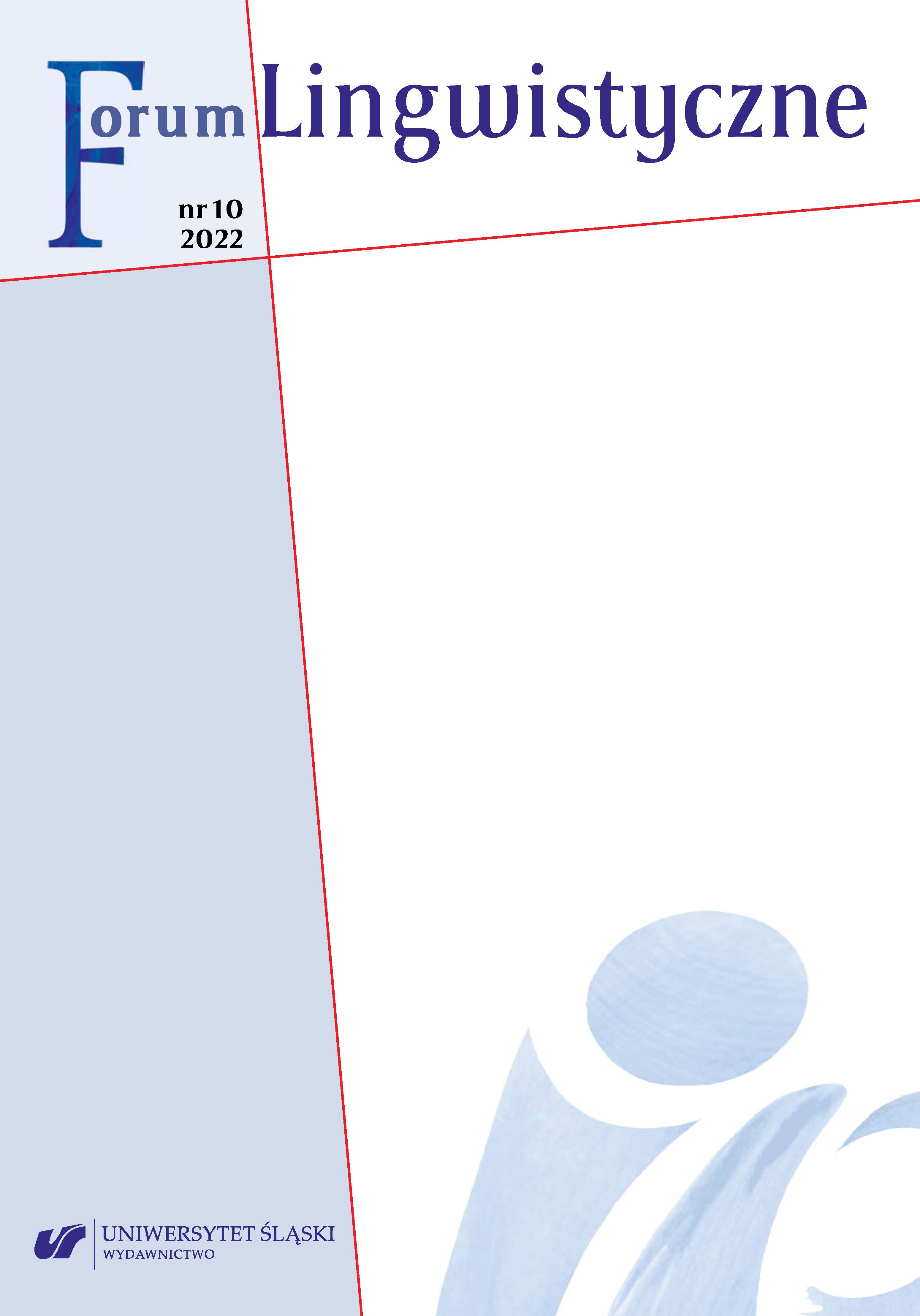
Compared to other speech disorders, stuttering does not show a high frequency. However, it concerns people of different ages, living in different times and places, and coming from different backgrounds. For people who stutter, this condition is often a source of frustration and stress. Unfortunately, as research shows, in the whole society the level of knowledge about stuttering is not high, and people who do not speak fluently often experience negative social reactions (ridicule, derision, low assessment of their potential). Research confirms this by using standardized tools: POSHA-S/C and POSHA-S-Child. Among the reasons for the dissemination of the stereotypical image of stuttering and of myths on this subject are its representations in feature films. However, it is to be hoped that the documentaries made in recent years will bring about changes in this image. In their article Agnieszka Płusajska-Otto and Agnieszka Myszka attempt to assess whether confronting students with the content of a full-length documentary about stuttering (When I stutter) can change the perception of this condition among respondents and, above all, whether such an experience can change social attitudes towards stuttering and stereotypical ideas about stutterers. The research, which included the use of the diagnostic survey method, was carried out on a group of 158 students from two Polish universities (the University of Rzeszow and the Stefan Batory State University in Skierniewice). The respondents completed questionnaires before and after the screening of the film. The results of the conducted analysis clearly showed a change in attitudes towards stutterers. Before the event, respondents believed that there were numerous impediments preventing stutterers from carrying out many professions (mainly those of the speech therapist, the teacher, and the actor). After the screening, they changed their views on this issue and most of them no longer saw any impediments. Before the screening, 2/3 of the respondents considered stuttering people to be nervous, shy, and insecure. After watching the film, the prevailing opinion was that above all they are brave and sensitive. In the PRE survey, respondents suggested that stutterers should put more effort into working on their speech; after the screening, such suggestions there were decidedly fewer, and statements about acceptance and praise dominated. All participants of the meetings emphasized the need to disseminate films and organize events that familiarize the public with the problems of people struggling with disabilities. The results of the research (both those presented in the article and those available in the literature on the subject) allow us to put forward the thesis that film – as a publicly available and relatively accessible medium – can play a significant role in the changing of attitudes towards people struggling with various disorders. Therefore, it not only can but must be used as a tool of raising public knowledge about all kinds of disorders, diseases, and indispositions.
More...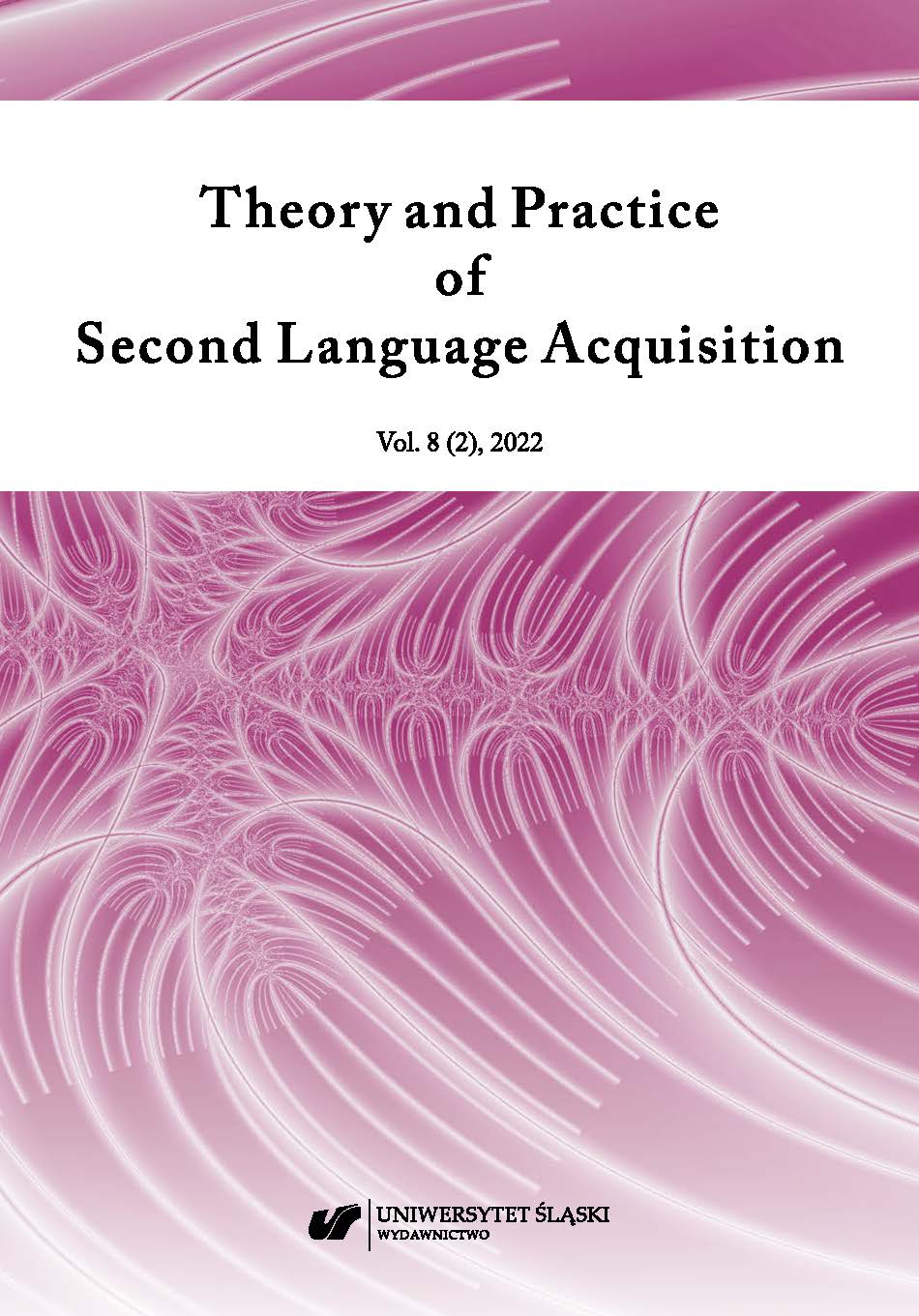
The article aims to scrutinize third agers’ in-class willingness to communicate (WTC) in English as well as to determine the relationship among WTC, intrinsic motivation, classroom environment, and teacher immediacy. The instrument adapted to this study was a questionnaire comprising biodata items, the in-class WTC tool (Peng & Woodrow, 2010), intrinsic motivation (Noels, Clément, & Pelletier, 2001), classroom environment (Fraser, Fisher, & McRobbie, 1996), and the teacher immediacy scale (Zhang & Oetzel, 2006). The data revealed that senior learners’ WTC was higher in meaning-focused than in form-focused activities. This finding indicates that the participants paid due attention to communicative interactions in English. Also, they were more eager to be actively involved in dyadic exercises as it might have given them a sense of security and confidence. It is noteworthy that intrinsic motivation turned out to be the strongest predictor of in-class WTC. The analysis showed that communication in English abroad and in-class was of paramount relevance for the informants. The older adults also underscored the fundamental role of the language instructor. In this respect, the students attached great importance to a non-threatening atmosphere, and the teacher’s personality traits, namely patience, professionalism, and empathy.
More...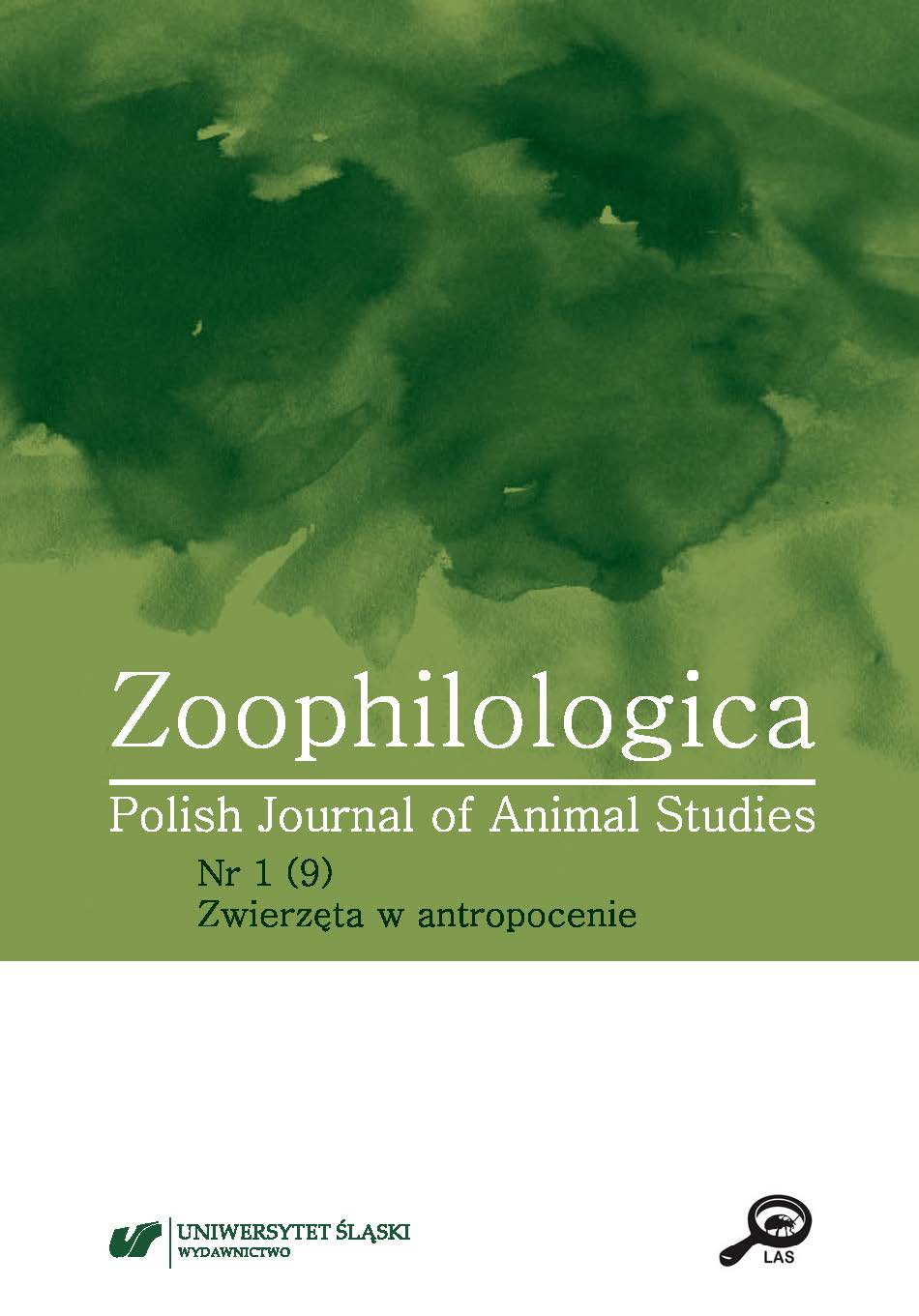
Tomasz Nowak’s article is part of a series of publications that deal with the problem of various aspects of communication. Here he focuses on the biological and semiotic dimensions of communication phenomena. His purpose is, inter alia, to give a biosemiotic reinterpretation of several key terms of classical information and communication theory. In particular, he is interested in the relationship between “communication of complication” and “complication of communication” as observed in different manifestations of communication between people and (other) animals. Nowak argues the biocommunication skills of human and non-human animals are separated by distance, both quantitative and qualitative.
More...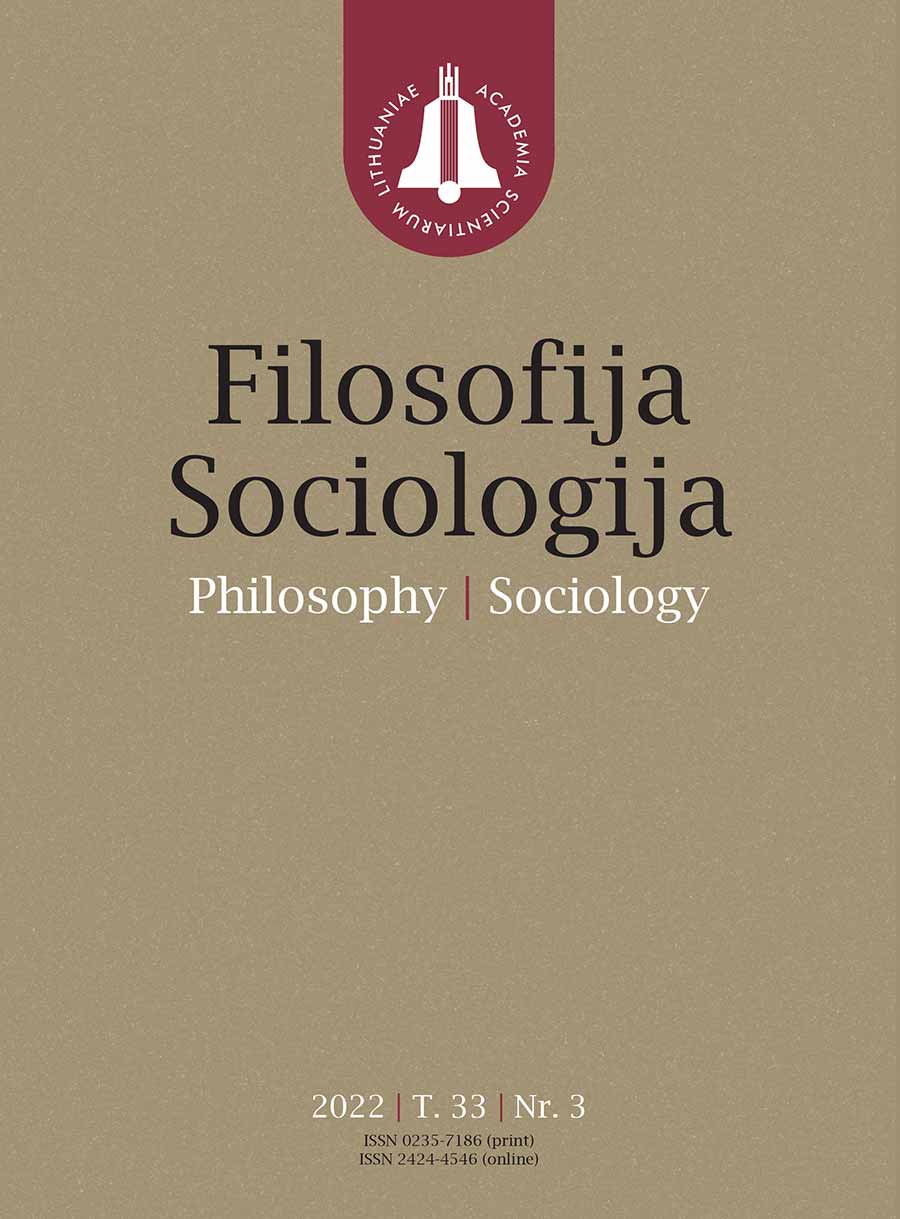
This article is an outline of the current issue of Filosofija.Sociologija, thematically divided into five sections. Starting from the most abstract thematically one and going down to reflections on actualities. Here I try to give it a meaningful structure and a flavour of a general Zeitgeist residing now in our contemporary academia.
More...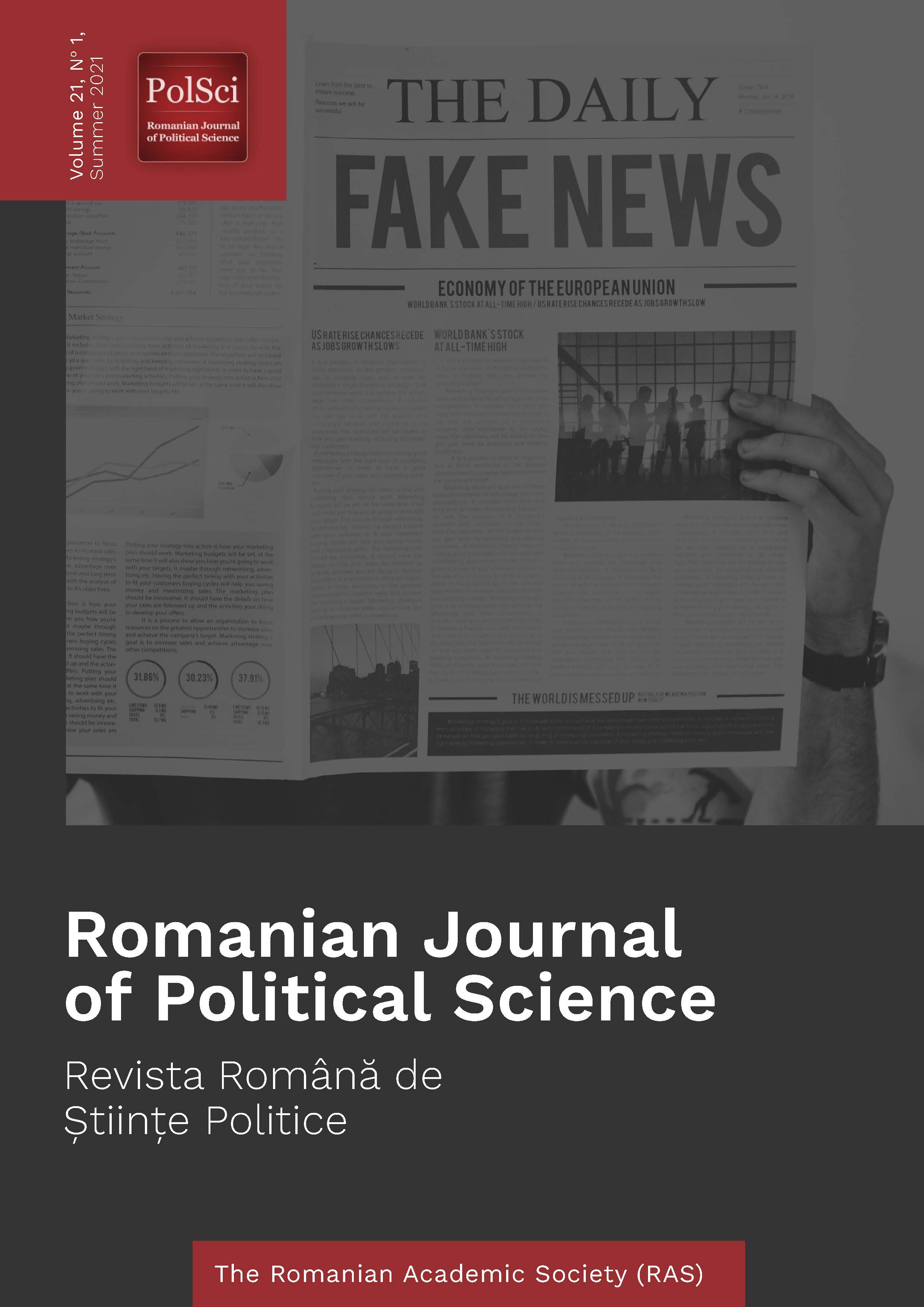
Social media plays a major role in the dissemination of misinformation. Although social networking sites (SNS) largely differ in their functionality and appearances, and therefore their ability to serve as misinformation vector, researchers have rarely systematically compared different SNS to investigate platform-specific effects beyond Facebook and Twitter. This study tries to address this lack of diversity concerning SNS in the literature by experimentally comparing SNS-specific effects across seven different platforms (Discord, Facebook, Instagram, LinkedIn, Telegram, Twitter, WhatsApp) and the Associated Press (AP) website as control condition. The focus is on the perceived trustworthiness of manipulated news, as well as on participants’ willingness to share, interact and distribute this news to friends or family. While platforms’ specific effects do not vary significantly in this experiment, further analysis shows that prior exposure to misinformation affects credibility judgements across all of them and could thereby inform an evidence-based strategy against SNS-powered misinformation.
More...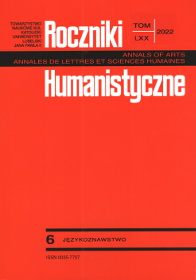
This paper proposes a draft of a research procedure on politeness in social media. Firstly, a justification is provided for adopting a broad understanding of politeness (as a set of linguistic and extra-linguistic ways and principles of building interpersonal relations in order to maintain communication). Secondly, the descriptive stance in researching politeness as understood in this way is advocated for and justified. In analysing politeness in social media as a pivotal research topic in media linguistics, the way in which social media can be understood is explored. Thirdly, the research procedure is designed to analyse data extracted primarily from Facebook. The stages of the analytical procedure are then put forward: (a) an analysis of the formal-stylistic patterns of language behaviour in social media (phrases of address and speech acts and genres of politeness, including their stylistic tonality), (b) an analysis of the pragmatic patterns of language behaviour (the way in which Grice’s principle of linguistic co-operation is implemented), and (c) an analysis of the socio-cultural patterns of language behaviour.
More...
The author of this article analyses the texts of a video review and tries to answer the question of whether the choice of linguistic devices is linked to the relationship between the sender and the participants of the interaction. The indicators of this relationship are sought by discussing the pragmatic, compositional and stylistic aspect of a new and popular form of critical discourse on a social networking site. The interpretation of the spoken narrative includes a discussion of the linguistic means of evaluation, the determinants of the emotional message and the functions of colloquial lexis. Linguistic activities aimed at interaction with the recipients, such as dialogicality, the personalisation of content and the individualisation of the message, are also important. The analysis leads to the conclusion that the form of self-presentation, type of recipient, channel of communication, and intentionality and heterogeneity of the statements are closely related to the social relations between the participants of the act of communication. The new form of presentation and evaluation involves entering a different communication situation and establishing new social relations with a group of recipients. The aim is not only to evaluate the film work, but also the conveyance of emotions, the dialogue with the viewer, the interest in a new work, the shaping of tastes and the attracting of a large audience. Such an elaborate goal inevitably leads to a change in linguistic devices.
More...
The aim of this paper is to discuss the Family Language Policy of selected Polish-Australian families residing in Melbourne. The concept of Family Language Policy entails language ideology, language practices and language management. For a better understanding of the context under study, the history of Polish emigration to Australia has been outlined. The key elements in the study of FLP include language socialisation and heritage languages (i.e. Polish), which are then discussed. A description of the study conducted in the Polish diaspora in Australia in 2014-2016 follows. This research involves mixed families who agreed to participate in case studies consisting of interviews, observations, and language portraits. An earlier stage involved a quantitative analysis carried out on the basis of an online survey completed by 124 parents.
More...
This article addresses aspects related to the current transformation of the category of humour in the sociolect and communication styles of the young people. The data are exemplified by digital discourses of the young taken from different channels and types of digital-oriented communication (including the database of the Youth Word of the Year). These language realisations, understood as variants of playing with the norms of language and the patterns of participation in culture, are embedded in the current transformation of the category of humour as a result of cultural phenomena such as the ludic aspects of pop-culture, the new carnivalisation of the xD philosophy, the apotheosis of triviality and experiences of extremeness.
More...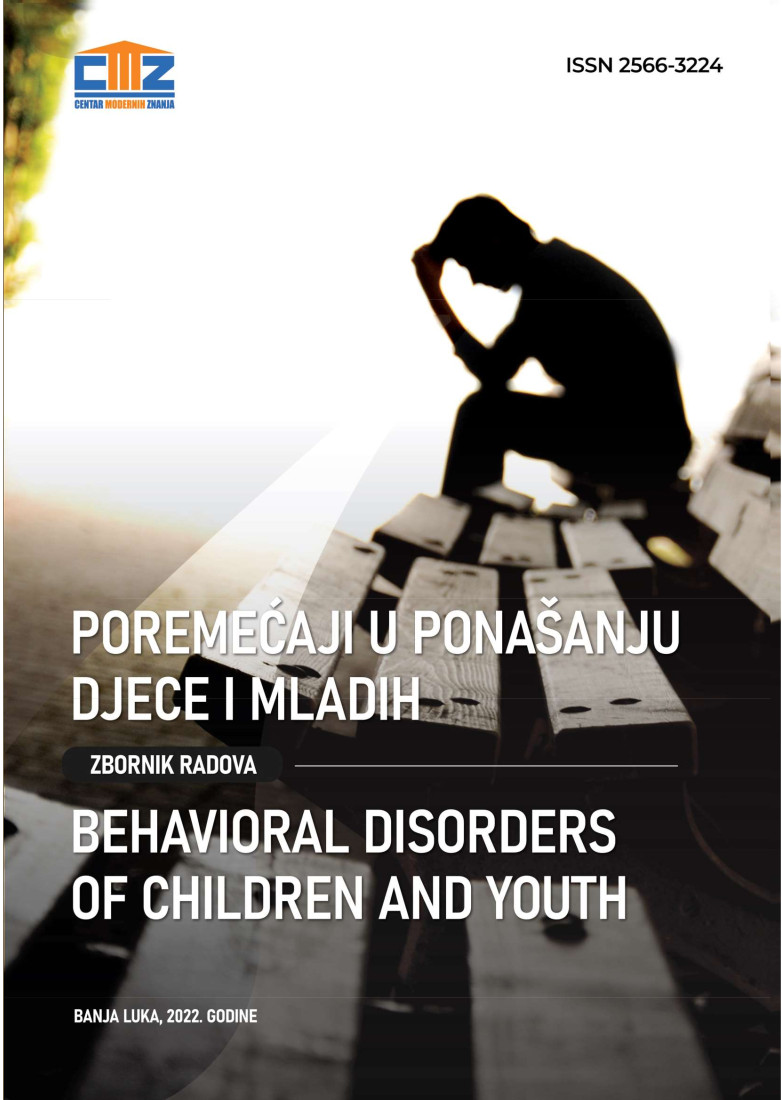
People with low self-confidence may have a greater tendency to use social networks more often because it is easier for them to make social contacts in such a way, but this may also be a reason for development of internet addiction and the consequences of that addiction. The goal of the paper was to examine the habits of using the internet and social networks among secondary school students and possible presence of lower self-confidence. Work method: An anonymous online survey was completed by 34 respondents aged 16 to 19. The survey consisted of two groups of questions. The first group of questions was from a structured interview (Caci, Scrimi, 2017.) which examined habits of using the Internet and Facebook. The second group of questions was from the self-esteem scale (Rosenberg, 1965). The data were processed using frequency analysis. Results: Answers on the scale of habits of using social networks were classified as always, often, occasionally, rarely, never When interrupted in Facebook activities, 11.8% of respondents always get upset and 17.6% often. Neglecting daily activities due to Facebook is marked as often by 5.9% of respondents and occasionally by 17.6% of them. 11.8% of respondents always stay on Facebook longer than they planned, and often 17.6% of them. When asked if they occasionally hide or defend their activities on the Internet, 2,9% of respondents said always and 5,9% of respondents said often. Reduced sleep time due to Facebook activity is often experienced by 20.6% of respondents and always by 8,8%. Regarding the statement that they think life is boring without Facebook, 8,8% of respondents replied often and 2,9% of respondents replied always. When it comes to Rosenberg's self-esteem scale, it was found that low self-esteem is present in 20.6% of respondents. Conclusion: In this pilot survey, which included a small sample of respondents, we confirmed that in a certain percentage of secondary school students there are symptoms which point to a frequent use of the Facebook in the direction of the development of addictive behavior and also a certain representation of low self-confidence which can be correlated. It is necessary to conduct a larger study of the population of secondary school students and planning of preventive activities in our environment.
More...
Information and communication tools become a full-fledged part of the lives of children and young people, they are understood as part of their living space. All in all, information and communication technology is becoming a full-fledged part of their lives, both from the aspect of private activities and from the professional aspect. The natural flow that is imposed is the inevitability of the implementation of computer philosophy in educational and teaching processes. The process of modernizing existing technologies takes place much faster in production areas, but educational institutions, schools and faculties are expected to follow innovative processes and to educate young people in accordance with the needs of society and the economy. New standards in the field of education have been accepted worldwide, which have significantly modified old-fashioned understandings and concepts of teaching. The introduction of information and communication technologies in education leads to a new and interesting way of conveying teaching content to children, pupils and students. The concept of knowledge is changing, so modern upbringing and education requires the transformation of the traditional form of knowledge reproduction into a model of active knowledge construction where teachers and students are partners in the joint action of information management, analysis and conversion into useful knowledge.
More...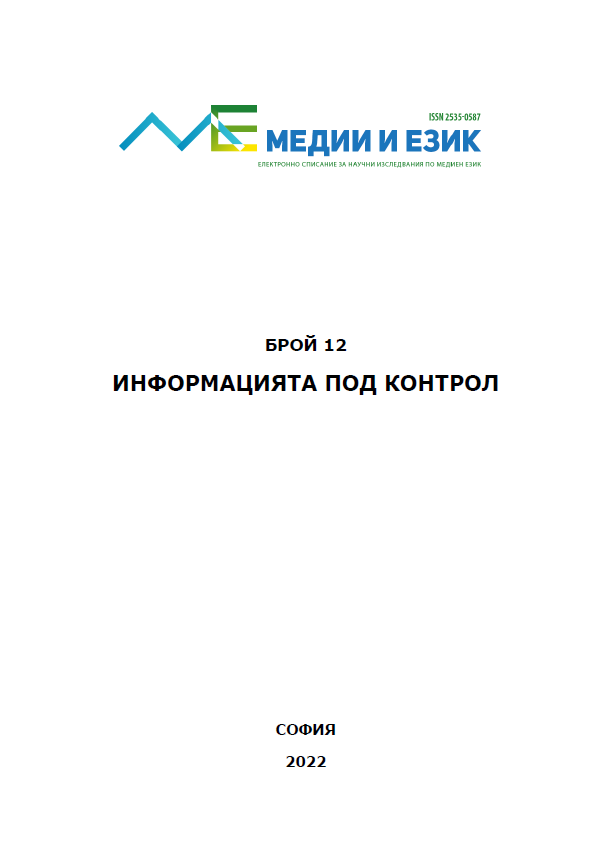
The article "Is there a Text Image of the World" will present the most important opinions in Poland on the interdependence of the Linguistic Image of the World and the Text Image of the World. He will try to answer the title question on the basis of empirical examples. Establishing a Text Picture of the World is also a kind of discourse research. The text proposes to refer to the lexicographic tradition (creating thematic dictionaries) and to the quantitative lexical analysis of the content. The empirical material used in the article consists of three text corpora of 250,000 words each. They collect texts taken from youth magazines of the 1990s. The views presented in the article are in opposition to the findings of the Lublin school of ethnolinguistics
More...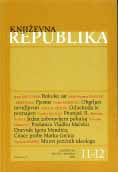
Prvi dadaistički javni nastup zbio se u Cabaretu Voltaire u zuriškoj Spiegelgasse, tijesnoj uličici smještenoj u starom dijelu grada. Početkom 1972. šetajući njome otkrio sam da se u tom prostoru tada nalazila stolarija. Zbila se pomalo dadaistička preobrazba. Ipak mnogo bolja od one koja je zadesila nedaleko smješten hotelčić u kojem su prije povratka u Rusiju boravili Lenjin i Krupskaja.
More...